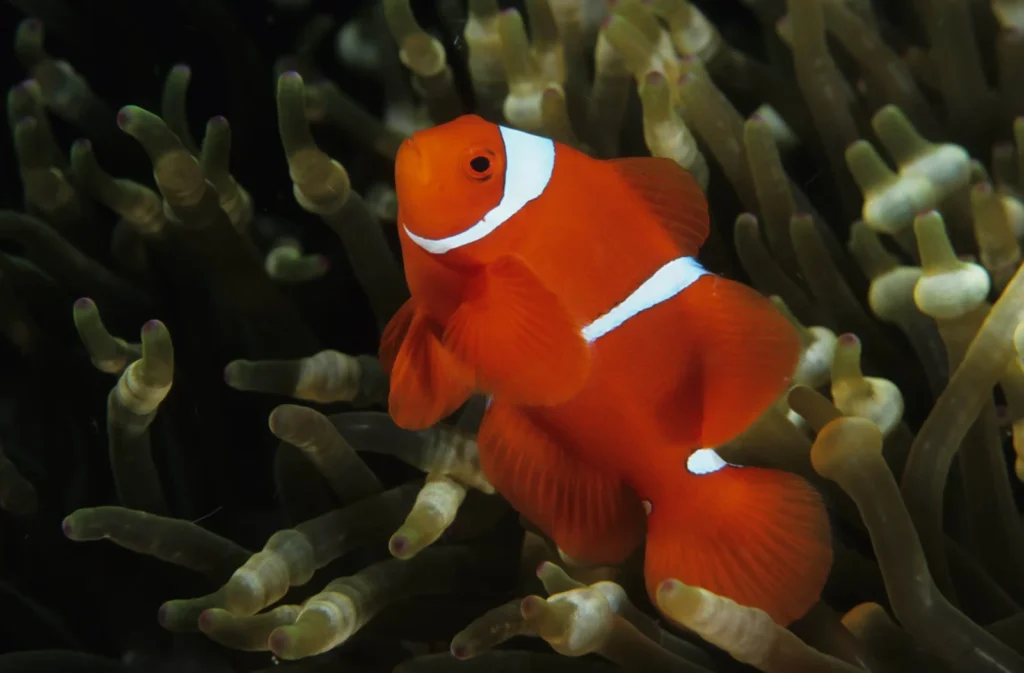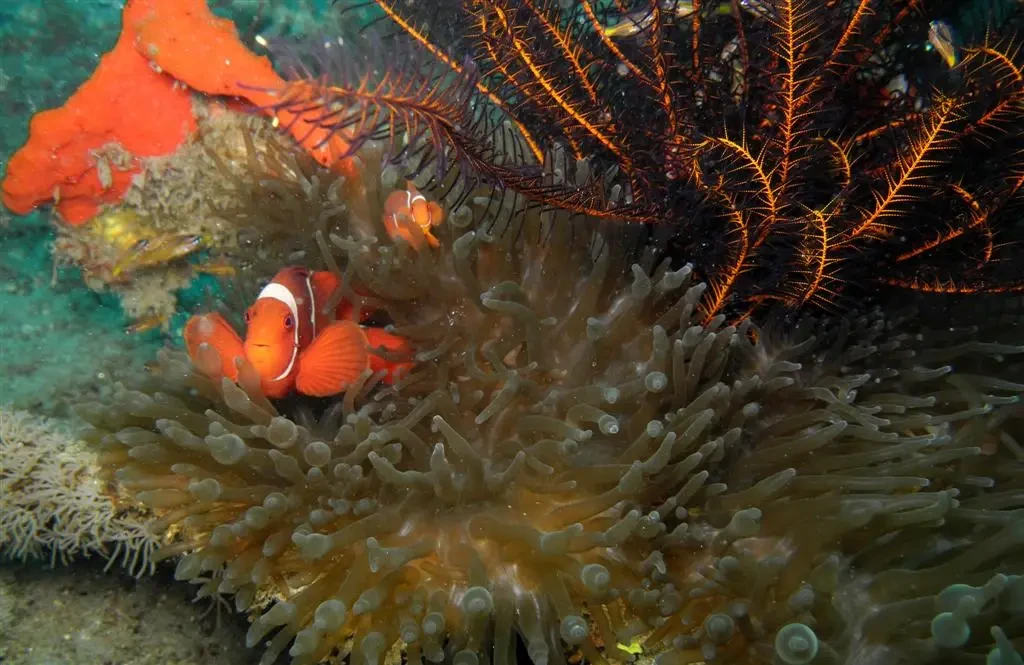Among all the clownfish клоун мавританський (Premnas biaculeatus) is highlighted bright colors, impressive size and unique behavior. It is the only species in the genus Premnas and one of the most popular clowns among aquarists.
📌 Чому клоун мавританський унікальний?
✔ The largest among clownfish (up to 17 cm)
✔ Bright red or burgundy color scheme
✔ The only clown with spikes on the gill covers
✔ Very aggressive and territorial
✔ Forms strong pairs and takes care of the offspring
In this article, we will look at all aspects of the life of this remarkable species - from its origin and biology to the peculiarities of its maintenance in aquariums.

Scientific classification
✔ The Kingdom: Animals (Animalia)
✔ Type: Chordal (Chordata)
✔ Class: Lucheperi pisces (Actinopterygii)
✔ Row: Perch-like (Perciformes)
✔ Family: Pomacentrovye (Pomacentridae)
✔ Gender: Premnas
✔ View: Premnas biaculeatus
📌 The maroon clown is the only member of the genus Premnas, while all other clowns belong to the genus Amphiprion.*
Appearance and color scheme
🎨 Key features:
✔ Dark red, burgundy or dark chestnut color
✔ Three vertical white or golden stripes (in young individuals, they are white, turn yellow with age)
✔ Spikes on the gill caps - a feature that other clowns don't have
✔ Sexual dimorphism:
* Females much more (up to 17 cm), darker
* Males smaller ones (5-7 cm), brighter
📌 The color of fish can vary depending on age, lighting, and mood.

Habitat and habitat
🌍 Where does it live?
✔ Western Pacific region
✔ Indonesia, Philippines, Papua New Guinea, Great Barrier Reef
🏝 Typical biotopes:
✔ Coastal coral reefs, lagoons, bays
✔ Habitat depth: 1-16 meters
🌊 Symbiosis with anemones
Мавританський клоун обирає only one type of partner anemone:
✔ Entacmaea quadricolor (bubble anemone)
📌 This clown does not change the anemone and will protect her to the last.

Lifestyle and behavior
🔹 Territoriality
✔ Very aggressive - attacks even much larger fish
✔ Protects your anemone from any threats
🔹 Social structure
✔ Lives in stable hierarchy:
• Dominant female - the biggest and most aggressive
• The male is smaller and obeys the female
* Young individuals live within the territory until a pair is formed
🔹 Hermaphroditism
✔ If the female dies, the largest male changes sex and becomes a new female
📌 This adaptation ensures continuity of reproduction.
Diet and nutrition
🍽 In nature:
✔ Small crustaceans (shrimp, mysids, copepods)
✔ Zooplankton
✔ Seaweed
🍽 In the aquarium:
✔ Live and frozen food (bloodworm, Artemia)
✔ Granulated feed
✔ Herbal Supplements
📌 Мавританський клоун всеїдний, але потребує білкової їжі для яскравого забарвлення.
Reproduction and development
🔹 Spawning
✔ Female lays eggs 500-1500 eggs near the anemone
✔ The male vents the eggs, cleans them of fungi
✔ Larvae hatch via 7-10 days
📌 In an aquarium, breeding a maroon clown is possible, but it requires patience.

Keeping in the aquarium
🟡 Basic requirements:
✔ Volume: from 250 liters
✔ Temperature: 24–28°C
✔ Salinity: 1.020–1.025
✔ Filtering: powerful
🟡 Compatibility:
✔ Large predatory fish (such as surgeons)
✔ Shrimp and strong invertebrates
🟡 Incompatibility:
❌ Other clowns (will attack them)
Dribni small peaceful fish
📌 This is one of the most aggressive clowns, so it's best to keep it alone or with larger species.
Variations of the maroon clown
🌟 Popular morphs:
✔ Золотосмуговий мавритаський клоун (Gold Stripe Maroon Clownfish)- the stripes are yellow, not white
✔ Lightning Maroon Clownfish - unique lightning-like stripe pattern
📌 These morphs were selectively bred in aquariums and are very popular.
Threats and protected status
❗ Main threats:
✔ Catch for aquarium trade
✔ Destruction of coral reefs
🌱 Is it going to disappear?
✔ Population stable, not included in the list of endangered species
📌 Мавританський клоун – популярна акваріумна риба, тому розведення в неволі допомагає зменшити тиск на природну популяцію.
Conclusion
Мавританський клоун – large, bright and very aggressive appearancewhat's appropriate only for experienced aquarists. He expressive coloration, interesting behavior, and a strong connection to anemones make it one of the most spectacular clownfish in the world.
🔥 If you need a bright and charismatic reef aquarium resident, Premnas biaculeatus will be the real star of your collection! 🐠✨
